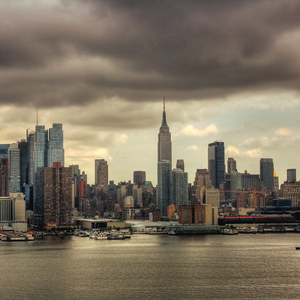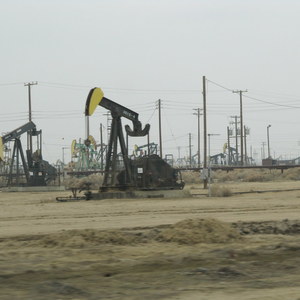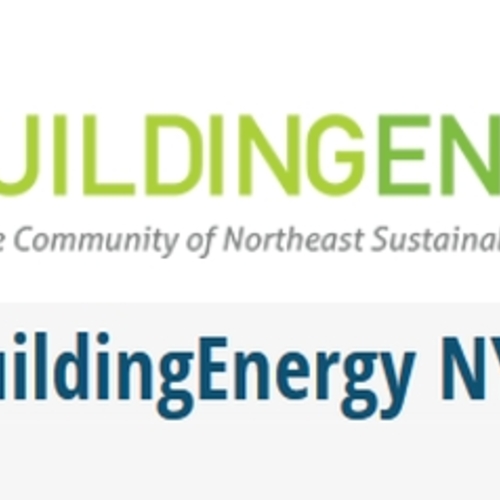
New York City lawmakers have approved an ambitious plan to cap carbon emissions from the city’s largest buildings beginning in 2024.
The Climate Mobilization Act, approved on a 45-2 vote April 18, affects residential and commercial buildings larger than 25,000 square feet and is aimed at helping New York lower its overall carbon emissions 80% by the middle of the century.
A summary provided by the Urban Green Council says that the new emissions limits — contributing to a planned 40% drop in emissions by 2030, compared to 2005 levels — will require extensive retrofits in many buildings. The new caps will affect an estimated 50,000 buildings.
The legislation sets limits for greenhouse gas emissions on a square footage basis. For example, The New York Times reported, the Empire State Building currently produces 6.27 kilograms of carbon dioxide per square foot per year but would be required to reduce that to 4.53 kilograms per square foot in 2030. Building owners who fail to meet the new caps could face fines in the millions of dollars.
Weekly Newsletter
Get building science and energy efficiency advice, plus special offers, in your inbox.
The legislation, which Mayor Bill de Blasio has pledged to sign, includes prescriptive energy-saving measures rather than emissions limits for some building types, including houses of worship, apartment buildings with rent-controlled units, and hospitals. Some real estate executives complained that the number of those exceptions would place a greater burden on other building owners. The owner of one 437-unit building in Queens, which was constructed in the 1950s, said that the plan’s goals are “totally unattainable.”
John H. Banks, president of the Real Estate Board of New York, said in a statement that the real estate industry supports the effort to lower carbon emissions. But the measure approved by lawmakers covers only half of the city’s building stock, he said, and would make it difficult to attract and retain technology, media, finance, and life science industries. The cumulative cost to building owners for making upgrades would be at least $4 billion, he said.
According to a report from the Climate Works for All coalition, 70% of total greenhouse gas emissions in New York come from buildings. Just 2% of the city’s 1 million buildings account for 45% of the city’s total energy consumption. The coalition’s report takes aim at what it calls “New York City’s elite emitters” who live in luxury buildings that have the biggest impact on climate.
“It is no surprise that without energy efficiency measures in place, luxury buildings will have enormous impacts on climate, especially given their super-sized amenities,” the report said. “Inefficient buildings with heated indoor pools, private fitness centers, and private performance rooms all require energy resources above and beyond the typical residential building.”
Among them are two Trump properties, which ranked third and fourth in terms of energy use intensity (EUI).
If some real estate executives were unhappy with the plan, supporters said the bill would create 40,000 jobs per year, including more than 23,000 construction jobs. In the long run, renovations that lower carbon emissions also will lower operating costs, proponents said.
Building owners also may be able to offset carbon reductions by buying energy generated from renewable resources, a provision the Urban Green Council said makes compliance more flexible.
“This law sets tough requirements for buildings to reduce carbon emissions. But it does so with innovative policy approaches that make it possible,” John Mandyck, CEO of Urban Green Council, said in a statement. “The ability to offset requirements with renewable power is an important incentive to green the grid, and the provision for building carbon trading is a breakthrough approach relevant to cities nationally and globally.”
New rules for skyscrapers
At a press conference on Monday, which was Earth Day, de Blasio described the impact of the new carbon emissions law and outlined several other steps the city would take as part of the NYC Green New Deal:
- All electricity used by city government will switch to renewable sources within five years. The mayor said electricity would come from sources such as Hydro-Québec.
- City energy codes will be rewritten to discourage traditional glass-and-steel high-rise buildings. They are architectural icons of New York City, but what de Blasio called “examples of the wrong way to do things.” If designers want to include significant amounts of glass on the exterior, they will have to increase building efficiency to compensate for it.
- The city also will divest its pension funds of $5 billion in oil stocks.
















13 Comments
This is a good piece. One thing I noticed is that it says "just 2% of the city’s 1 million buildings [in NYC] account for 45% of the city’s total energy consumption. The coalition’s report takes aim at what it calls “New York City’s elite emitters” who live in luxury buildings that have the biggest impact on climate."
And this: “It is no surprise that without energy efficiency measures in place, luxury buildings will have enormous impacts on climate, especially given their super-sized amenities,” the report said. “Inefficient buildings with heated indoor pools, private fitness centers, and private performance rooms all require energy resources above and beyond the typical residential building.” Among them are two Trump properties, which ranked third and fourth in terms of energy use intensity (EUI)."
This calls it as it is. The top energy hogs on the planet are elites like Trump. Of course he would like to divert attention from that by saying AGW is not real. It is much easier to scapegoat immigrants, and minorities as enemies of the people than answer to the charges of what he is doing to increase AGW. He and his political cohorts would like to cow the natural opponents to this by creating the big lie and turning people against each other. That is his instinctual art form and it has been very successful for him up till now. To stop him one only needs the courage to call it like it is, that he is a pampered rich boy that was never said "no" to when he was growing up.
Whether the timing of this news item is providence or intentional I have to thank Scott and GBA for posting it.
The 2% that are "elite emitters", are definitely NOT "luxury buildings" where people live. The article seems to be conflating them.
Much of the 2% elite emitters of computer power for the banking industry that consume gobs of power for both the servers and cooling thereof. The luxury people who own & operate them are more likely live on Long Island or the Connecticut Gold Coast than in some energy intensive Manhattan residence. Even those Trump buildings with the high ranking energy use intensity aren't likely to be merely residential, even if there are luxury residential suites in the buildings. (You can heat a whole lot of high-rise swimming pool with with the heat that needs to be removed to keep the data centers running.)
Blaming it all on slobby fat cats in luxury digs reads like disengenuous rabble rousing. Not that such fat cats don't exist (they do), but their excesses are not really the core problem with the dirty 2% elite emitters. I don't believe William Neuman at the Times did any real investigative work on this. (I'm almost positive he hasn't a clue about the Empire State Building.)
It's not about the magnitude of the energy use per se, it's how carbonaceous the energy source is. A natural gas-fired chiller has a different carbon per MMBTU than a compressor type heat pump delivering the same amount of cooling, which in turn varies in carbon emissions by the type of generation. You'd have to really dig into the weeds on the NYC Green New Deal to see how well that is all sorted out, but it's pretty clear that reducing or eliminating on-site fossil fuel use and electrifying everything will fix most of it, if the sources of electricity are sufficiently.
The Empire State Building (also not a luxury residence) being held out as one of the dirt-bag buildings that's going to need a 28% reduction in carbon emissions by 2030 underwent a major energy retrofit beginning decade ago (completed in 2012?) guided by The Rocky Mountain Institute folks to get it where it is now, a retrofit that included remanufacturing all of the window glazing into suspended film triple-panes on site in a shop set up in the basement of the building:
https://rmi.org/wp-content/uploads/2017/04/Buildings_Retrofit_EmpireStateBuilding_CaseStudy_2009.pdf
It may well be that simply signing a PPA from a low-carb energy source could get the Empire State Building under the new limit as soon as current contracts expire (which seems to be the approach the city government is taking.) I don't know that to be the case, but $100 says Neuman doesn't know either.
I'd be more inclined to believe Neuman knew what he was writing about if he could show even the napkin math on the source of that Empire State Building carbon sources, not just a snapshot of where it's carbon intensity stood last week or last year. Anything deeper than the ink is too far into the weeds, mayhaps?
To be sure some of the 2% elite emissions buildings will require major retrofits to reach the new limits, but most of the heavy lifting has already been done on the Empire State building.
+1,
2 percent of 1 million buildings is 20,000 of which Trump has approx 13 with his name on the door.
Dana, once again I think you are letting your technical expertise, none of which I'm disputing you possess, lead you around by the nose. In other words, you are missing the forest for the trees. There is real damage being done by Trump and his buildings. Whether you think the message and my reaction to it is overblown is not a matter of the technical specifics of "there are worse things being done". One can always say that. Equivocating is not a substantive response. It is, well, equivocating...
It is no joke that the people with the money, and especially the ones that never learned personal boundaries in youth, cause some of the most extensive damage to society and to the planet. If one is persuaded to get on board with the fat cats, whether it be fossil fuel companies or someone like Trump, it does not make them less reprehensible because they have power. I still remember how influenced you were when you learned Royal Dutch Shell was getting into the domestic battery business because they had "deep pockets".
It's is not disingenuous rabble rousing to call out specifically a person by the name of Trump. He is the one who is trying to encourage more coal mining in a time when it's cheaper not only to stop operating most of them, but to build entirely new plants from renewables. If one can stop such a destructive person by calling them out personally and keeping them from being (god forbid) reelected then it is well worth doing. He is not a good person and it doesn't make me think that "I'm" a saint for saying it. It just means I have my priorities straight. Where the hell are yours?
It's totally disengenuous rabble rousing to bitch about the luxury pads of the rich, malevolent, & powerful rather than calling them out on their actual policy policy issues.
"New York City is about to embark on an ambitious plan to fight climate change that would force thousands of large buildings, like the Empire State Building and Trump Tower, to sharply reduce their greenhouse gas emissions."
Seriously? There is no reason to put those two buildings in the same sentence, and MANY good reasons to avoid doing so.
It is really stooping to the bottom of the barrel when using buildings like the Empire State Building as a whipping boy, where the owners have spent considerable analysis and capital on making it more efficient, FAR more than the city government has spent on their building efficiency, and far more than most other building owners in NYC. The Empire State Building is one of the shining examples of what needs to be done and how to take it on, not some carbon emissions pariah! I doubt any of Trump's building can make those claims (but don't actually know.) Some Trump buildings in the world are better than others, some even have rooftop solar, not that the guy who put the "twit" in "Twitter" really has anything to do with it.
Moving the data centers out of Manhattan for energy intensity reasons doesn't fix it any more than moving the bankers from the luxury tower suites out to the Hamptons does, or moving heavy manufacturing from North America to Asia does.
I'm pretty much anti-fan of the Trump administration policies (and cabinet member choices & judicial nominees) almost across the board, and look forward to eventually seeing criminal prosecutions of the most deserving. But I'm not going to spend time to bitching about the carbon footprint of his commuting to NYC/NJ & Florida or the carbon footprint of the Trump Towers worldwide- those aren't the real problems with Trump or the administration.
I'm glad that NYC is taking it on (it's about time), but it's more important to talk about what's REAL rather than sticking your head in a bucket with an NYT microphone and screaming just to hear the reverb, the way Neuman seems to be doing for at least part of the article. Digging into the weeds a bit on the actual policy detail in the legislation would have been more useful than throwing out the Trump Tower (without any data on it's standing relative to comparable buildings) or the Climate Works for All's accounting how many of the current dirty dozen buildings are owned by the Trump organization. They too will be subject to the new city policy, and I don't care who owns what building as long as they get fixed. I'd be thrilled if Trump were merely spending his time managing/owning higher carbon buildings, where the damage is orders of magnitude less.
"It's totally disengenuous rabble rousing to bitch about the luxury pads of the rich, malevolent, & powerful rather than calling them out on their actual policy policy issues."
Are you referring to the original news item or to my response to it? It sure sounded like you were responding to my response to it. I hope you realized that there were several distinct points that both I made and the original article made. I noted that Trump is encouraging coal and coal burning production. Also, the article never said where the Empire State building ranked in energy profligacy, just that it needed improvement. Also, I may be wrong but I think energy profligacy goes hand in hand with the amount of energy used per person and not just the amount of energy used per cubic foot of space. In that regard I think the Empire State building must be strides ahead of the two Trump properties cited. That's because the nature of the Trump properties are low individual counts for cubic foot of space.
Maybe you conflated the two things but I sure didn't. In addition the original article named the two Trump properties explicitly as ranking third and fourth worst in terms of energy efficiency. I believe the article even though they didn't explain their rating methodology.
Finally you are putting yourself in the same category as the Trumpistas if you think I'm arguing to hear myself speak. That is very insulting and I would accept an apology from you if offered. I'm very passionate about the issues and you are dead wrong about me not speaking from the heart. I don't speak here unless I feel strongly about something or feel I can offer something useful. You are now taking the opinion of Trump supporters and acting like you know me better than you do.
Dana, I just saw that you addressed the underwater comment to the author of the piece so I won't take it personally. But I think the same thought applies: How do you know the article was written just to hear themselves in public? If they are like me it could just as well have been written from a point of real concern.
Yep.. gotta be a "trump thing"". I didnt and WILL NEVER support him but WHY do these topics bother to bring his name into it?
The NYT and Trump have been at it for decades. It's not really political (Trump has more than once been a registered Democrat, Republican, and an Independent).
Here is some Perspective. My home is 2500 sqft two stories + attic and basement and uses my boiler uses less than 120k btu/hr on design day, just 45 min from NYC. My sisters apartment has a boiler in it, that serves her 1 bedroom unit, and they through a 250k btu navien, in it. If she doesn’t turn it on, her apartment, on the 23rd floor, is still warm essentially on all but the absolute coldest days. They aren’t efficient at all.
This WILL BE litigated for the next twenty years OR MORE! So why not spend money at the power source insteasd of fighting with building owners. I know of one corp that owns a few resi buildings in NYC that people live in for little rent and a percentage are free rent! ZERO GOVT KICKBACKS RCVD. zero tax credits. These are decent 50s/60s era buildings with oversized boilers.
So, penalize these owners? That will force sale of these buildings, they'll be torn down and residents will need to be absorbed by rest of nyc housing.
Doesnt make sense!
There are numerous carve outs. Perhaps the corporation you're speaking off will be one of them.
So they have apartment buildings with rent-controlled units that are supposed to be upgraded. So how is the landlord/owner supposed to pay for that? The owner is bullied into spending a bunch of money but can't raise prices on the people consuming what s/he provides? That makes no sense, but then my experience is that many city politicians don't make a lot of sense, and especially NYC.
Log in or create an account to post a comment.
Sign up Log in